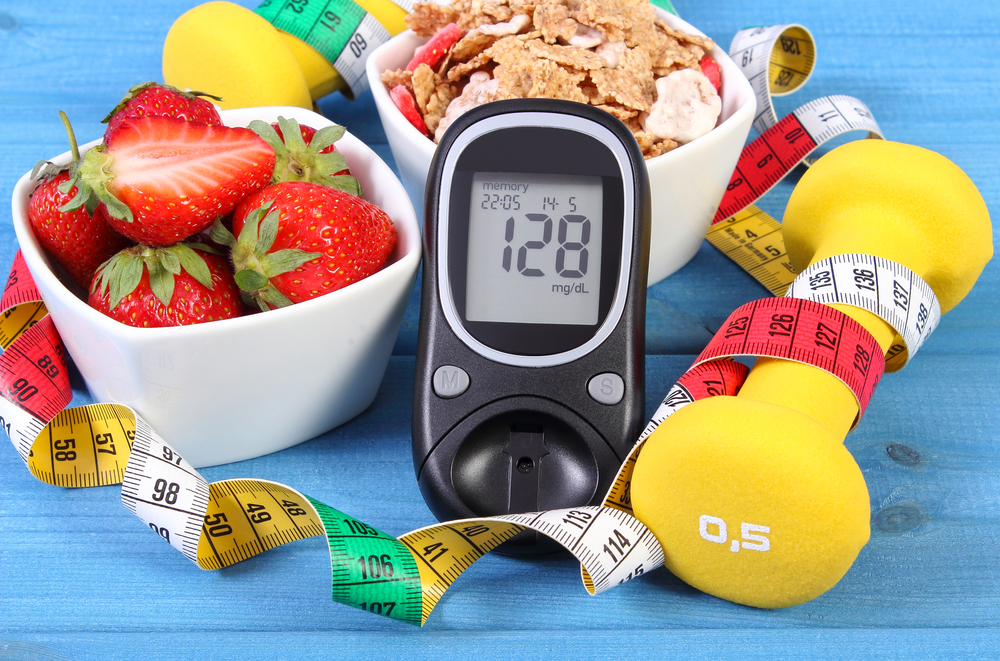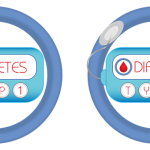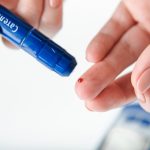Diabetic retinopathy is a diabetic complication. It is a condition where the blood vessels in the retina, the light sensitivity tissue at the back of your eye, are damaged. The blood vessels can either leak fluid, bleed, or swell. All of these can cause vision loss, low vision, and can lead to blindness. Symptoms may be mild at first and you may not know you have this condition until a long time into the disease. Anyone who has type 1, type 2 or gestational diabetes can develop diabetic retinopathy. It usually affects both eyes.
There are two types, Nonproliferative diabetic retinopathy which is when it is at the early stages of the condition. Blood vessels have just started leaking in the retina. The second type is Proliferative diabetic retinopathy which happens when the disease progresses. Usually vision changes have become noticeable. Abnormal blood vessels start growing in the retina at this stage.
Causes
The cause of diabetic retinopathy is when your blood sugar is too high for too long. This causes a blockage in the small vessels that keep your retina healthy. When this blockage occurs your eye will try and grow new blood vessels that won’t be as strong or healthy and are more prone to leak. You are more at risk for diabetic retinopathy if you are pregnant with gestational diabetes, if you suffer from hypertension, hyperlipidemia, or if you allow your blood sugar to be uncontrolled.
Symptoms
Symptoms may not be noticeable until the condition becomes serious. Once symptoms become noticeable you may suffer from loss of central vision, inability to see colors, blurry vision, have trouble reading, or have trouble seeing far away. You may also notice holes or black spots in your vision. Floaters, or little black spots may also appear in your vision.
Diagnosis
Diagnosis can happen at a routine eye exam. Your doctor will want to check a few things though during your exam to see how far the condition has progressed.
- Visual acuity will be tested which is to see how clearly you see.
- Intraocular pressure can be checked to make sure there are no signs of glaucoma.
- Eye muscle function or how well you can move your eyes.
- Peripheral vision to see how well your vision out of the side of your eye is.
- Pupil response to see how well your pupil reacts to light changes.
- Your doctor may also want to do a pupil dilation. This is done with some drops that dilate your pupil so your doctor can see better into the back of your eye. This can help your doctor check for abnormal blood vessels, bleeding in the center of the eye, new blood vessel growth, or retinal swelling.
Treatment
Diabetic retinopathy cannot be cured. Treatment can be done to help slow progression and help restore some vision to an extent. Treatment will be dependent on age, medical history, extent of retinal damage, and extent of vision loss.
In the early stages your doctor may want to do continual recheck exams to see how fast the condition is progressing. This could mean an exam every 2-4 months. Injections of anti-vascular endothelial growth factor drugs or corticosteroids can be injected directly into the eye. This can be done on a scheduled regular basis to help slow progression and restore some vision.
Laser surgery can be done to help reduce swelling in the retina, as well as shrink blood vessels and stop them from leaking.
Vitrectomy is an outpatient surgical procedure. This is usually suggested if you have cloudy vision as a symptom. The surgeon will make a small incision in your eye, help repair blood vessels, and remove scar tissue. This may help clear up the cloudy vision.
Prevention
There are some things you can do to help prevent getting diabetic retinopathy. The main thing is to make sure you manage your diabetes. This means to take medicines how you are supposed to, use insulin as directed, eat a healthy and balanced diet, test blood sugars regularly, test hemoglobin A1C regularly, test urine for ketone levels, and have regular health care follow up visits.
- Controlling your blood sugar is key in prevention.
- Avoid smoking or using other tobacco products.
- Exercise regularly can also help manage your blood sugar levels.
- Have annual eye exams, this can help with early detection.
- Keep your blood pressure within a healthy range.
- Pay attention to any vision changes you have and see a doctor immediately.
- If you are pregnant, have an eye exam during the first trimester.
- If you end up with gestational diabetes, follow up with your eye doctor later on in your pregnancy.
Conclusion
There is no cure for diabetic retinopathy, but there are treatment options that can help slow progression and help get some eyesight back. Usually blindness does happen over time. The progression depends on the person. Once diagnosed with diabetic retinopathy keeping your blood sugar levels under control can help slow progression and help with treatment options to be the most effective.
Since diabetes is a lifelong disease the chance of diabetic retinopathy can happen at any point. It is important to make sure you have a manageable diabetic plan and have annual eye exams.
Purium’s Best Of Greens when taken between meals may help support healthy blood sugar levels!
If you have Diabetes routine eye exams are a must! Learn more about Diabetic Retinopathy. #HealthSurgeon
Read More: 10 Best Foods For Healthy Eyes
Sources:
https://www.mayoclinic.org/diseases-conditions/diabetic-retinopathy/diagnosis-treatment/drc-20371617
https://my.clevelandclinic.org/health/diseases/8591-diabetic-retinopathy
https://www.webmd.com/diabetes/diabetic-retinopathy
https://www.hopkinsmedicine.org/health/conditions-and-diseases/diabetes/diabetic-retinopathy
Find out where to buy Purium here, don't fall for these online business traps.
Did You Know?
- 1Looking to make extra money? We have Brand Partner openings on our team.
- 2Vitamins and Minerals in Purium are listed here
- 3You can Protect your gut bacteria from harmful glyphosate with this.
- 4Purium Health Products are organic and GMO free.
- 5The Biggest Purium Discount is available using our codes.









